Painting rules
The great Mongolian empire, created by the great Genghis Khan, many times surpassed the spaces of the empires of Napoleon Bonaparte and Alexander the Great. And it did not fall under the blows of external enemies, but only as a result of internal disintegration ...
By uniting scattered Mongolian tribes in the 13th century, Genghis Khan managed to create an army that was unmatched neither in Europe, nor in Russia, nor in Central Asian countries. Not a single land army of that time could compare with the mobility of its troops. And its main principle has always been the attack, even if the main strategic task was defense.
The envoy of the Pope at the Mongol court, Plano Karpini, wrote that the victories of the Mongols depend in many respects not so much on their physical strength or strength, but on excellent tactics. Carpini even recommended that European military leaders follow the example of the Mongols. “Our armies should be governed by the model of the Tatars (Mongols. - Comm. Ed.) On the basis of the same harsh military laws ... The army should in no way be fought in the same mass, but by separate detachments. Scouts must be sent in all directions. And our generals should keep troops day and night in alert, as the Tatars are always vigilant, like the devils. ” So what was the invincibility of the Mongolian army, from where did its commanders and privates take the beginning of the techniques of mastering the martial art?
Strategy
Before starting any military actions, the Mongol rulers in the kurultai (military council. - Note auth.) Elaborated and discussed in detail the plan for the upcoming campaign, as well as determined the place and time of the gathering of troops. Spies without fail extracted "tongues" or found traitors in the enemy's camp, thereby supplying military leaders with detailed information about the enemy.
During the life of Genghis Khan, the supreme commander was himself. He usually invaded an invaded country with the help of several armies and in different directions. From the commanders, he demanded a plan of action, sometimes amending it. After that, the performer was given complete freedom in solving the problem. Genghis Khan was personally present only at the first operations, and making sure that everything was going according to plan, he provided the young leaders with all the glory of military triumphs.
Approaching the fortified cities, the Mongols collected all kinds of reserves in the vicinity, and, if necessary, organized a temporary base near the city. The main forces usually continued the offensive, and the reserve corps proceeded to the preparation and conduct of the siege.
When the meeting with the enemy army was inevitable, the Mongols either tried to attack the enemy suddenly, or, when it wasn’t necessary to count on surprise, sent forces around one of the enemy’s flanks. Such a maneuver was called “tulugma”. However, the Mongolian commanders never acted on a pattern, trying to extract the maximum benefit from specific conditions. Often, the Mongols threw themselves into a feigned flight, with unsurpassed art covering their tracks, literally disappearing from the eyes of the enemy. But only as long as he did not relax his guard. Then the Mongols sat on fresh spare horses and, as if appearing out of the ground in front of a stunned enemy, made a swift raid. In this way, in 1223, Russian princes were defeated on the Kalka River.
It happened that in a mock escape, the army of the Mongols was scattered so that it covered the enemy from different sides. But if the enemy was ready to fight back, he could be released from the encirclement, in order to finish off on the march. In 1220, one of the armies of Khorezmshah Muhammad was destroyed in this way, which the Mongols deliberately released from Bukhara, and then defeated.
Most often, the Mongols attacked under the cover of light cavalry in several parallel columns, stretched along a broad front. The enemy convoy that faced the main forces either held positions or retreated, while the rest continued to advance, advancing on the flanks and behind the enemy. Then the columns approached, the result of which, as a rule, was the complete encirclement and destruction of the enemy.
The tremendous mobility of the Mongolian troops, which allowed them to seize the initiative, gave the Mongolian commanders, and not their opponents, the right to choose both the place and the time of the decisive battle.
To streamline the advancement of combat units and quickly report to them orders for further maneuvers, the Mongols used black and white signal flags. And with the onset of darkness, the signals were given by burning arrows. Another tactical development of the Mongols was the use of a smoke screen. Small detachments set fire to the steppe or dwellings, which made it possible to conceal the movement of the main troops and gave the Mongols the much needed advantage of surprise.
One of the main strategic rules of the Mongols was the pursuit of a defeated enemy up to complete destruction. In the military practice of medieval times it was new. The knights of that time, for example, considered it humiliating for themselves to chase the enemy, and such ideas persisted for many centuries, until the era of Louis XVI. But the Mongols needed to make sure not so much that the enemy was defeated, but that he would no longer be able to gather new forces, regroup and attack again. Therefore, he simply destroyed.
The Mongols in a rather peculiar way kept records of enemy losses. After each battle, special detachments cut off the right ear of each corpse lying on the battlefield, and then gathered into bags and accurately counted the number of enemies killed.
As you know, the Mongols preferred to fight in the winter. The favorite way to check whether the ice on the river would sustain the weight of their horses was to lure the local population there. At the end of the 1241 year in Hungary, the Mongols left unattended cattle on the eastern bank of the Danube in front of starved refugees. And when they were able to cross the river and lead away the cattle, the Mongols realized that the offensive could be started.
Warriors
Every Mongol from early childhood was preparing to become a warrior. The boys learned to ride almost before walking, a little later, bow, spear and sword were mastered to subtleties. The commander of each unit was chosen on the basis of his initiative and courage displayed in battle. In the detachment subordinate to him, he exercised exceptional authority — his orders were carried out immediately and without question. Not a single medieval army knew such a cruel discipline.
Mongol warriors did not know the slightest excesses - neither in food nor in the dwelling. Having acquired unparalleled endurance and stamina over the years of preparation for the military-nomadic life, they practically did not need medical assistance, although from the time of the Chinese campaign (XIII – XIV century) the Mongolian army always had a whole staff of Chinese surgeons. Before the start of the battle, each warrior would put on a shirt of durable wet silk. As a rule, the arrows pierced this tissue, and it was drawn into the wound along with the tip, making it difficult to penetrate it, which allowed surgeons to easily remove the arrows from the body along with the tissue.
Practically entirely of cavalry, the Mongol army was based on the decimal system. The largest unit was the tumen, which included the 10 of thousands of warriors. The tumen consisted of 10 regiments, each by 1 000 people. The regiments consisted of 10 squadrons, each of which was 10 units of 10 men. Three tumens made up the army or army corps.
There was an immutable law in the army: if in battle one out of a dozen escaped from the enemy, they executed the whole ten; if a hundred ran a dozen, they executed the whole hundred, if a hundred ran, they executed the whole thousand.
The light cavalry fighters, who made up more than half of the entire army, did not have armor, except for a helmet, were armed with Asian bow, spear, curved saber, a light long pike and lasso. The power of the bent Mongolian bows was in many ways inferior to the big English, but each Mongolian horseman had with him at least two quivers of arrows. The armor, with the exception of the helmet, the archers did not have, and they were not a necessity for them. The task of light cavalry included: reconnaissance, camouflage, support for heavy cavalry by shooting and, finally, the pursuit of a fleeing enemy. In other words, they should have hit the enemy from a distance.
For melee used units of heavy and medium cavalry. They were called nukers. Although initially, the nukers were trained in all types of combat: they could attack scattered, using bows, or in close formation, with the help of spears or swords ...
The main strike force of the Mongolian troops was heavy cavalry, its number was no more than 40 percent. Heavy horsemen had at their disposal a whole set of leather armor or chain mail, taken, as a rule, from defeated enemies. The horses of heavy cavalrymen were also protected by leather armor. For long-range combat, these warriors were armed with bows and arrows, for the close one — with spears or swords, broadswords or sabers, battle axes or maces.
The attack of the heavily armed cavalry was decisive and could change the whole course of the battle. Each Mongolian rider had from one to several spare horses. Herds were always directly behind the line and the horse could be quickly changed on the march or even during the battle. On these stunted, hardy horses, the Mongolian cavalry could go up to 80 kilometers, with convoys, walling and throwing guns - up to 10 kilometers per day.
Siege
During the life of Genghis Khan in the wars with the Jin Empire, the Mongols in many ways borrowed from the Chinese both certain elements of strategy and tactics and military equipment. Although at the beginning of their conquests, Genghis Khan's army was often powerless against the solid walls of Chinese cities, after several years the Mongols developed such a fundamental siege system that it was almost impossible to resist. Its main component was a large, but mobile detachment, equipped with throwing machines and other equipment, which was transported in special covered wagons. For the siege caravan, the Mongols scored the best Chinese engineers and created on their basis the most powerful engineering corps, which turned out to be extremely effective.
As a result, not a single fortress was an insurmountable obstacle to the advance of the Mongolian army. While the rest of the army moved on, the siege detachment surrounded the most important fortresses and proceeded to the assault.
The Mongols took over from the Chinese and the ability to surround it with a palisade during the siege of the fortress, isolating it from the outside world and thereby depriving the besieged opportunity to make forays. Then the Mongols went to storm, using various siege weapons and stone-throwing machines. To create panic in the ranks of the enemy, the Mongols poured thousands of burning arrows on the besieged cities. They were shot by light horsemen right from under the fortress walls or from a catapult from afar.
During the siege, the Mongols often resorted to cruel, but very effective methods for them: they drove in front of a large number of defenseless prisoners, forcing the besieged to kill their own compatriots in order to get to the attackers.
If the defenders fiercely resisted, then after the decisive assault the entire city, its garrison and the inhabitants were subject to destruction and total robbery.
“If they were always invincible, then this was due to the boldness of strategic plans and the distinctness of tactical actions. In the face of Genghis Khan and his commanders, the art of war reached one of his highest peaks, ”the French commander Rank wrote about the Mongols. And, apparently, he was right.
Intelligence service
Intelligence actions were used by the Mongols everywhere. Long before the start of the campaigns, the scouts studied the terrain, armament, organization, tactics and mood of the enemy army to the smallest details. All of this intelligence gave the Mongols an indisputable advantage over the enemy, who sometimes knew much less about himself than he should have. Mongolian intelligence network spread literally around the world. Spies usually operated under the guise of merchants and merchants.
Especially the Mongols succeeded in what is now called psychological warfare. The stories of cruelty, barbarism and torture of the recalcitrant were deliberately spread by them, and again, long before the hostilities, in order to suppress any desire to resist. And let there be a lot of truth in such propaganda, the Mongols very willingly used the services of those who agreed to cooperate with them, especially if some of their skills or abilities could be used for the good of the cause.
The Mongols did not refuse any deception, if he could allow them to gain an advantage, reduce their victims or increase the losses of the enemy.
- Dmitry Chulov
- http://www.vokrugsveta.ru"rel =" nofollow ">http://www.vokrugsveta.ru
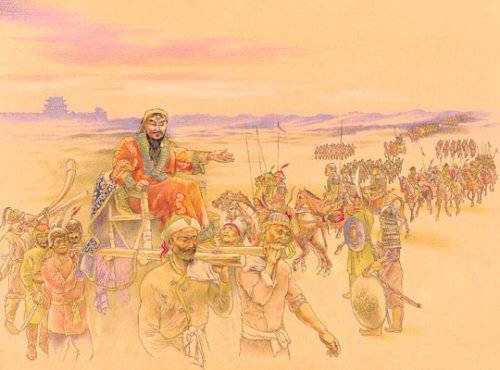
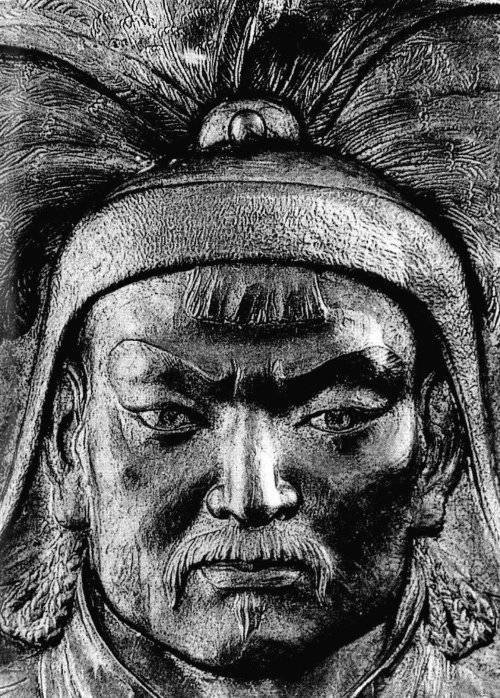
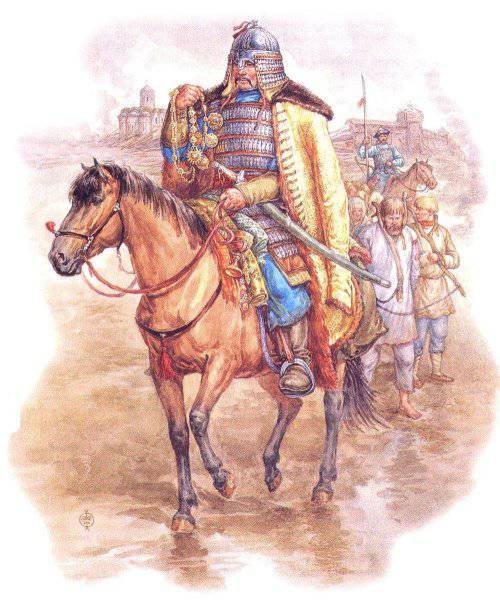
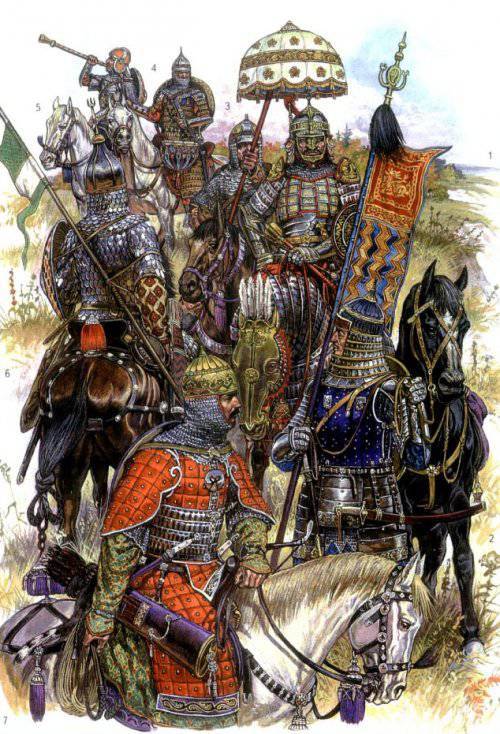
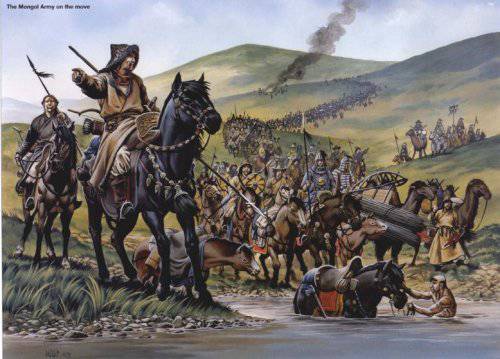
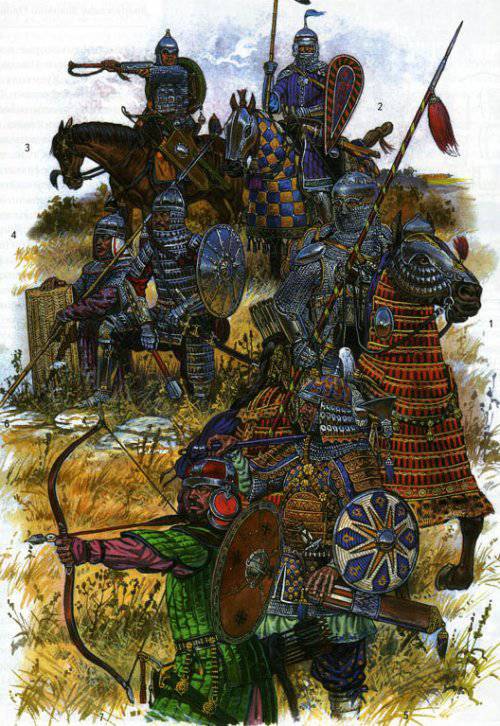
Information